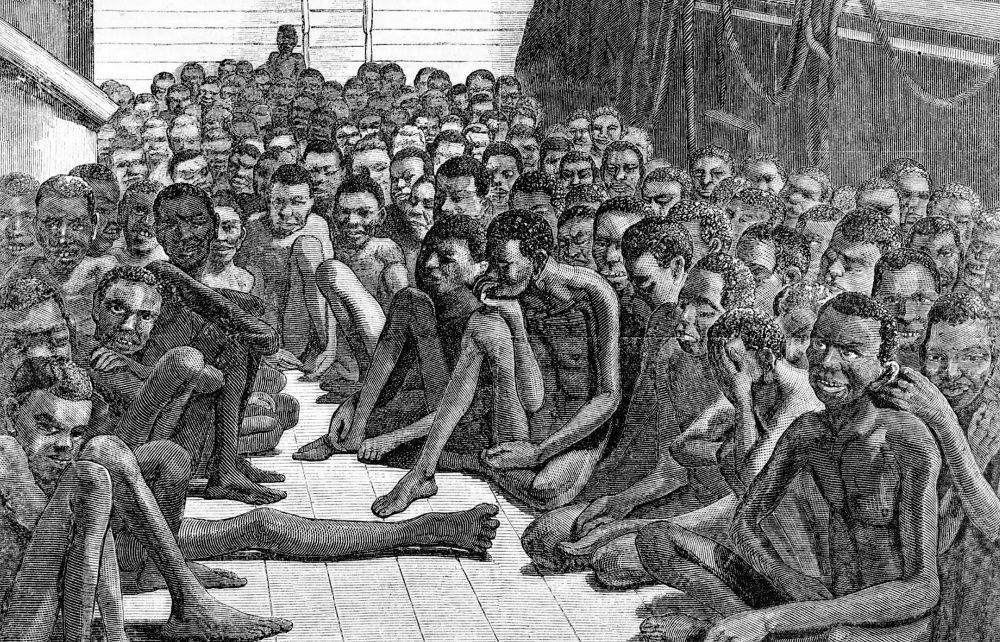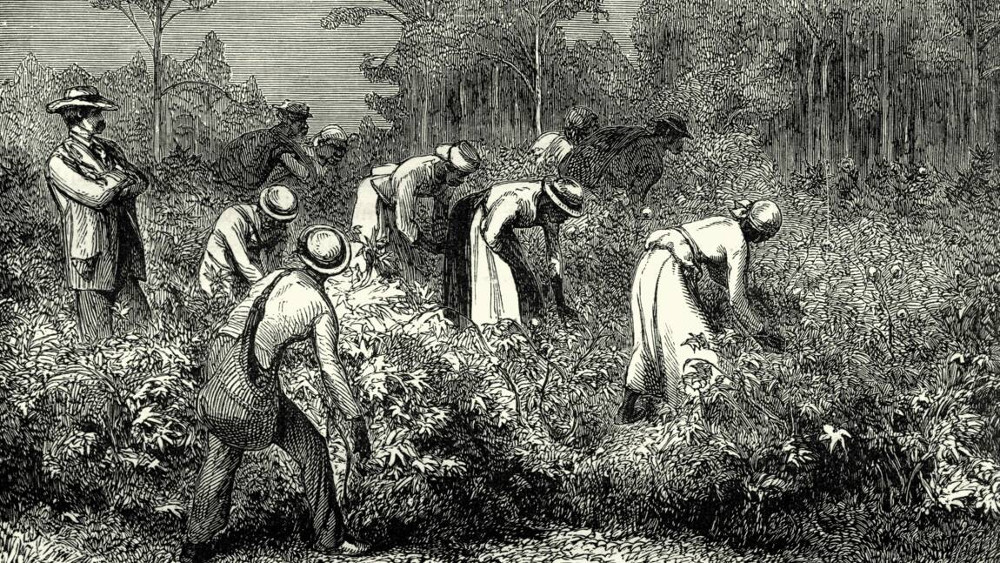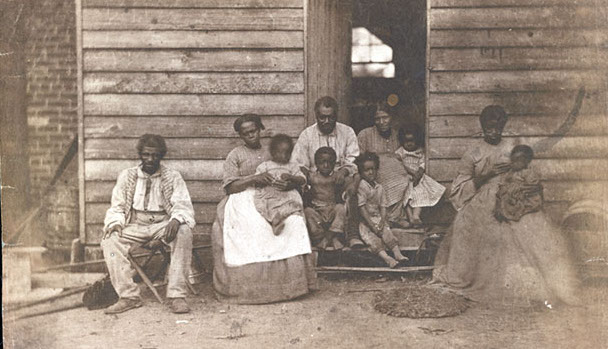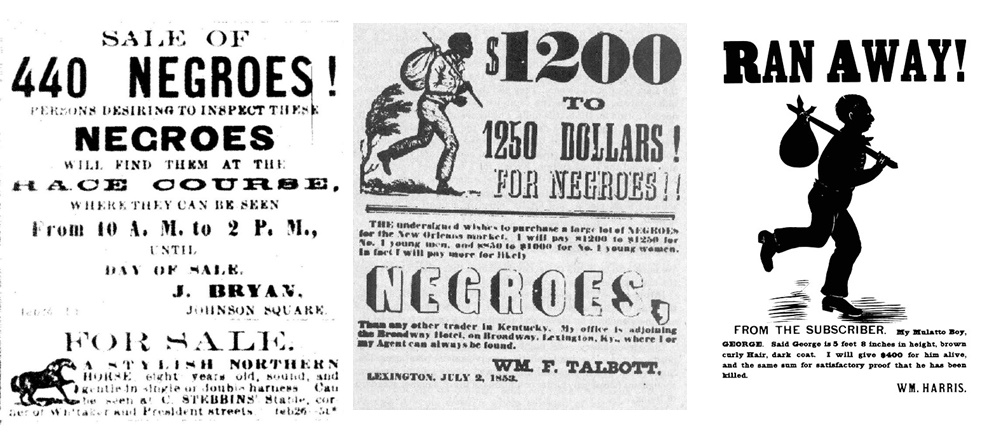Slavery was the economic linchpin of several states in the American South before its abolition in 1865 following that country’s bloody civil war (War of Secession). Slaves had been kidnapped in Africa and subjected to inhumane treatment.

Slaves leave Africa crammed onto slave ships; many die on the way.

Slaves were used as labor for the large cotton plantations in the American South.

Slaves were crammed together in rudimentary dwellings called shacks.
For their owners, slaves are commodities that they can buy, sell or even kill if they should rebel or try to escape.

Whether holding an auction, making an offer to buy, or circulating a wanted poster, these media advertisements leave no doubt that slaves were considered their owners’ property.





